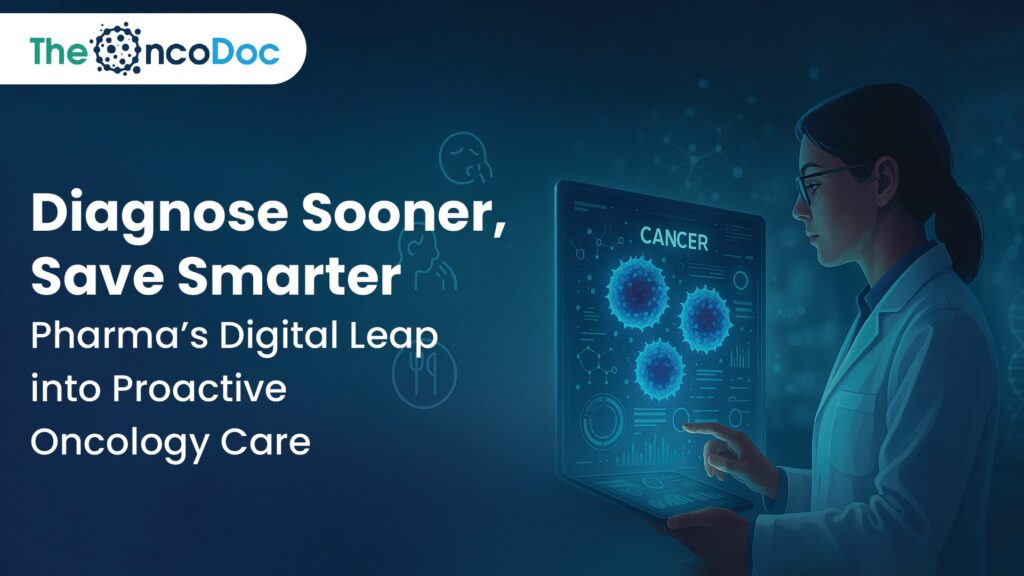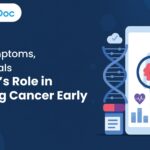Introduction: From Treatment to Timely Detection
Digital marketing in the pharmaceutical industry has traditionally revolved around promoting therapies and generating awareness among healthcare professionals (HCPs). However, in oncology, a growing realization is shifting focus: the most powerful impact digital pharma can make may be earlier diagnosis, not just later-stage intervention.
Across India and other developing countries, late-stage cancer diagnosis remains a pressing issue. In many cases, general practitioners (GPs) and community doctors are the first point of contact, but they often lack the tools and awareness to identify early warning signs. This creates a unique opportunity for pharma marketers to expand their reach, not only to oncologists but also to the broader diagnostic ecosystem.
Digital platforms provide unprecedented access to Tier 2 and Tier 3 cities, enabling campaigns that are regional, real-time, and clinically meaningful. This article outlines how strategic digital marketing can play a pivotal role in early detection, support general practitioners, and build authentic healthcare partnerships while still achieving core brand objectives.
1. Empower General Practitioners with Clinical Microtools
A GP in a semi-urban town might see hundreds of patients each week, but without structured tools, subtle cancer symptoms can easily be dismissed as benign conditions. Digital microtools can change that.
These assets include:
- Symptom checklists for common cancers
- Referral decision trees based on initial presentation
- Short videos in regional languages
- Quick-read infographics on red-flag signs
- Interactive diagnostic pathways built for mobile access
These digital resources must be lightweight, credible, and instantly accessible. They empower general physicians to triage cases better and refer high-risk patients early.
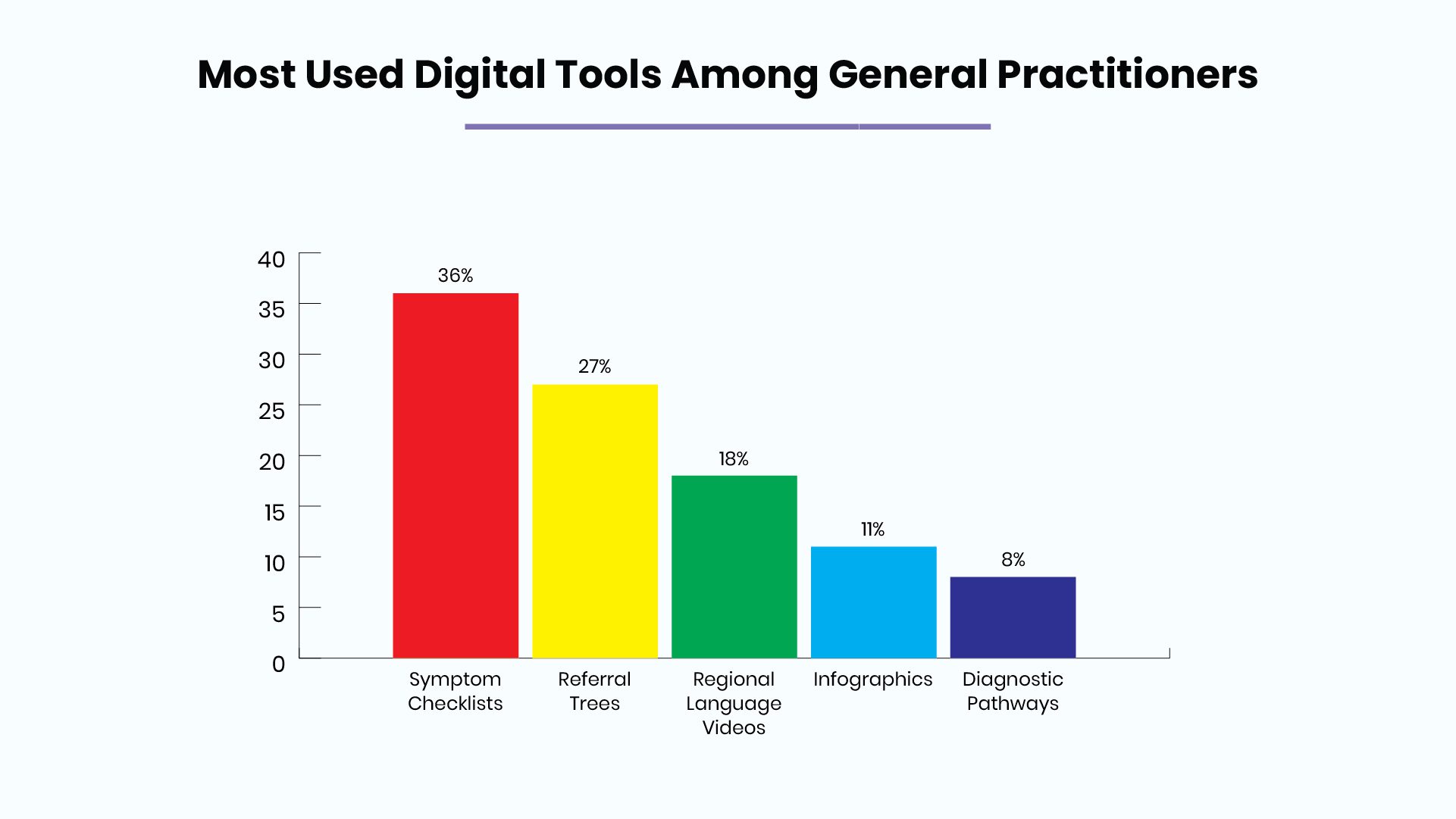
2. Choose the Right Channels for Tier 2 and 3 Penetration
The success of any digital campaign lies in how well it reaches its target audience. For pharma, this often means rural and semi-urban doctors, who are highly active on platforms like WhatsApp and Telegram, rather than traditional email or portals.
Key engagement drivers:
- WhatsApp broadcasts to verified GP networks
- Telegram groups for CME and clinical tools
- Regional doctor apps used for consultations or patient tracking
- Localized Facebook and Google Ads to boost awareness and reach
The challenge is not just broadcasting but optimizing content for these channels. PDFs and infographics, for example, perform better than links or forms on mobile-heavy platforms.
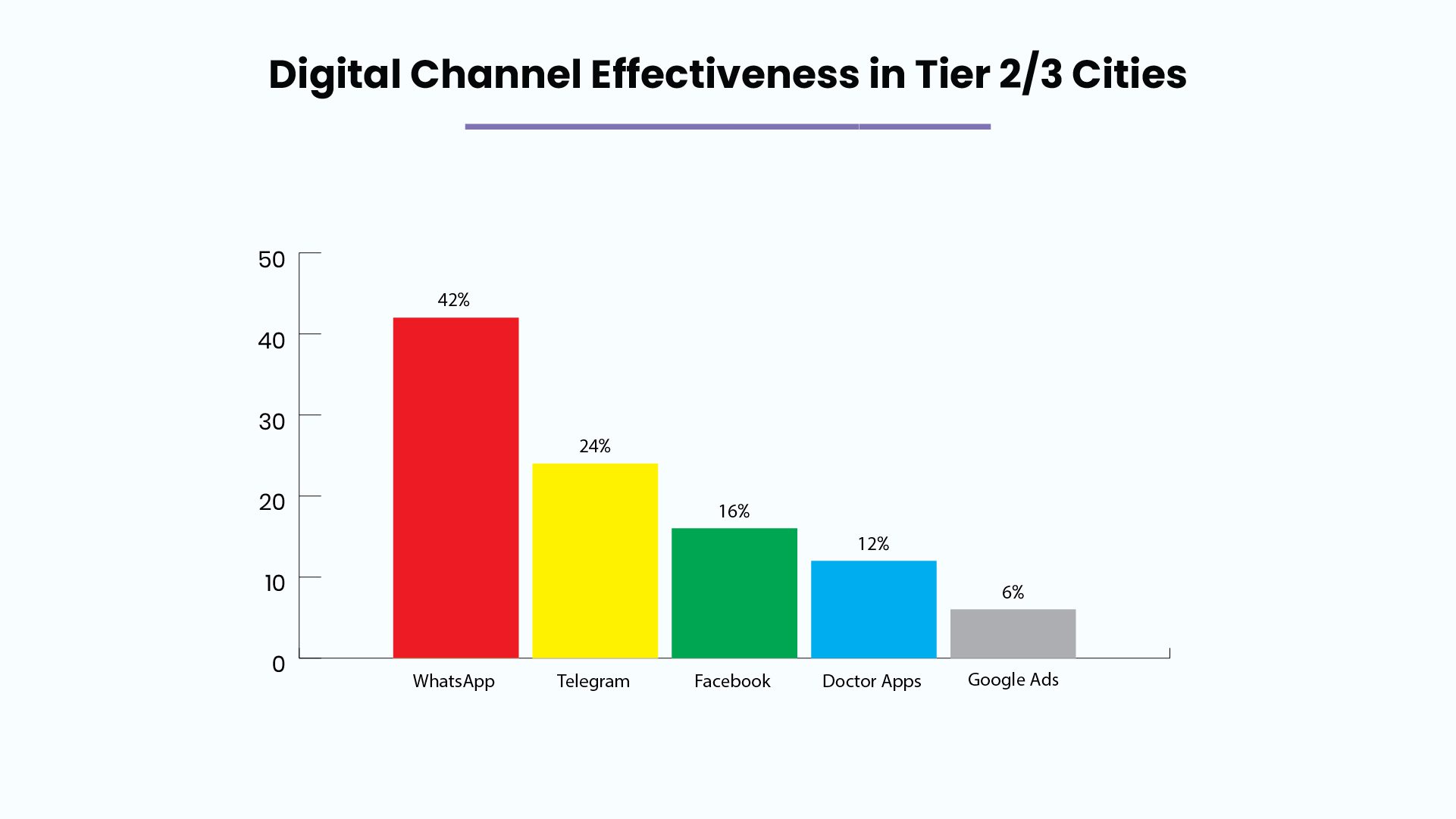
3. Humanize Awareness with Stories and Survivor-Led Narratives
Pharma brands often shy away from using emotional storytelling, but in early detection, human stories drive behavior change far better than statistics. When survivors share how early diagnosis changed their lives, or when local doctors recount “close calls” that saved patients, audiences listen.
Strategies to implement:
- Partner with NGOs and support groups for real patient stories
- Use local influencers or public health advocates to demystify screenings
- Develop “doctor testimonial” videos explaining when and why to refer
These stories must be culturally relevant, in the local language, and integrated with actionable next steps like QR codes linking to referral tools or screening apps.
4. Monitor the Right Metrics: Beyond Clicks and Views
Most digital campaigns still chase vanity metrics like impressions, likes, or CTR. But when the goal is early cancer detection, the real KPIs are clinical behaviors:
- Did the doctor download and use the referral checklist?
- Was the patient redirected to a diagnostic center?
- Did GPs revisit the campaign page or re-watch the video?
Were the tools shared within doctor groups?
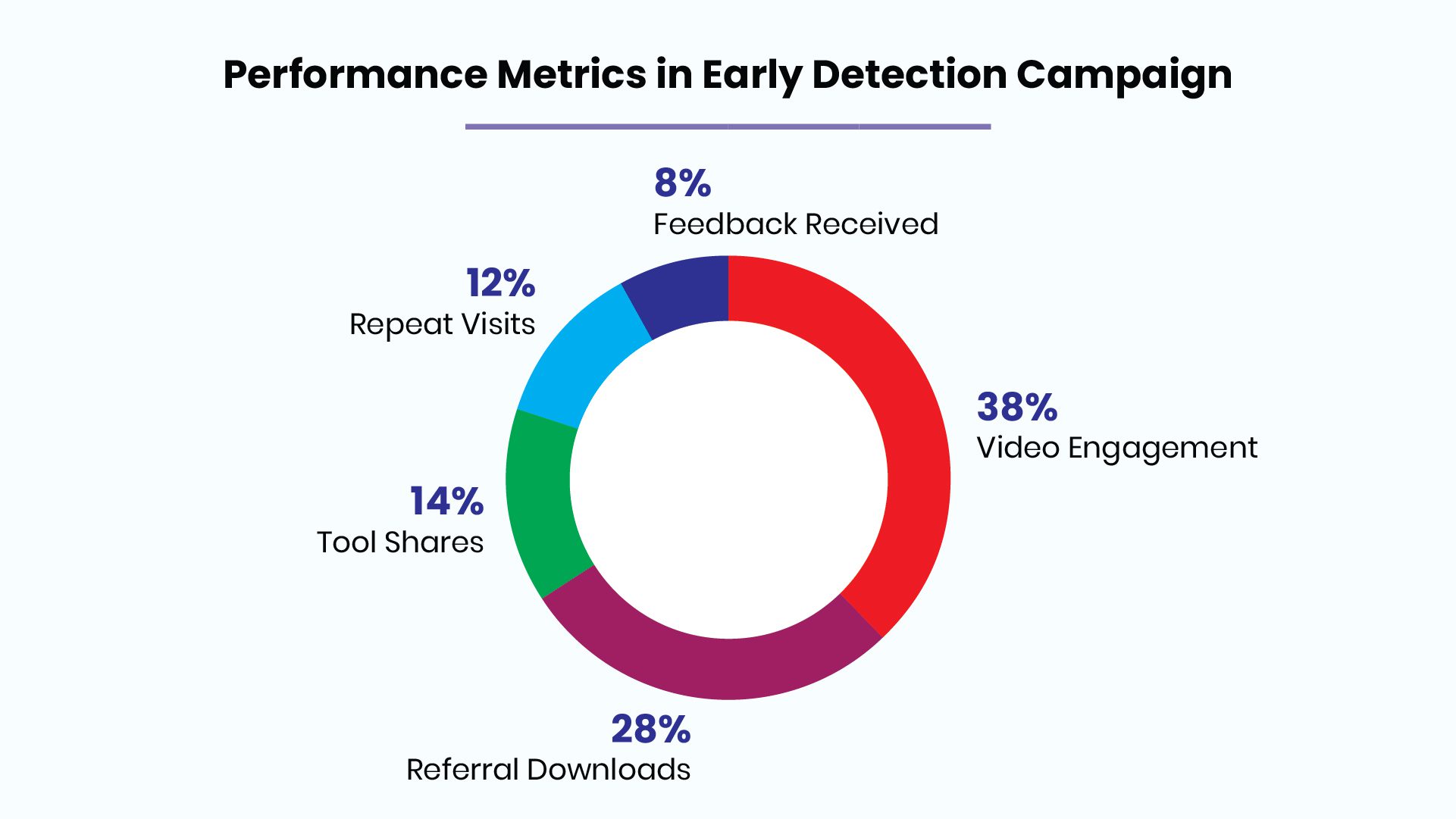
These insights enable pharma teams to optimize campaigns dynamically, reinvesting in what works and eliminating low-impact assets.
5. Align Field Force with Digital Intelligence
While digital leads the outreach, the field force still builds the relationship. Digital campaigns should serve as pre-call and post-call intelligence for medical representatives and MSLs.
Examples:
- CRM integrations showing which doctors clicked a WhatsApp link
- Auto-scheduling follow-up calls post-download
- Region-specific field decks linked to content interactions
This closed-loop model ensures personalized follow-ups, boosting both engagement and rep productivity.
6. Use Real-World Data to Target Hotspots
Digital marketing tools like Google Trends and Facebook Audience Insights can reveal high-risk geographies, districts where searches for symptoms like “lump in breast” or “blood in stool” are rising. Pair this with epidemiological data, and you can launch micro-campaigns tailored for regional disease trends.
Execution ideas:
- Launch language-specific referral ads in those regions
- Run GP-targeted webinars or CME modules with local case studies
- Provide subsidized diagnostics in collaboration with local labs
This strategy not only optimizes impact but also positions the brand as community-aware and socially responsible.
7. Strategize for Sustainability, Not Just Spikes
Early detection campaigns must run long enough to matter. Consistency builds habit. A month-long campaign may generate buzz, but sustained visibility over six to twelve months creates lasting change.
Best practices:
- Refresh creative assets every two months
- Celebrate real outcomes (e.g., “1000 referrals from 50 towns”)
- Provide evolving toolkits based on HCP feedback
Long-term trust results from consistent utility, not flashy launches.
Conclusion: The New Mandate for Pharma Marketing
The new mandate for pharmaceutical marketing in oncology is clear: start earlier, think broader, and measure smarter. This means empowering GPs, choosing the right channels, crafting human stories, and tracking meaningful KPIs.
Final Takeaways:
- Equip Tier 2/3 GPs with diagnostic microtools
- Use mobile-first platforms like WhatsApp and Telegram for outreach
- Replace passive content with regionally personalized tools
- Measure success by downloads, referrals, and repeated interaction
- Blend digital scale with human storytelling for emotional impact
When pharma marketers design campaigns that influence diagnosis timing, not just treatment choice, they don’t just support brands. They save lives.
The Oncodoc team is a group of passionate healthcare and marketing professionals dedicated to delivering accurate, engaging, and impactful content. With expertise across medical research, digital strategy, and clinical communication, the team focuses on empowering healthcare professionals and patients alike. Through evidence-based insights and innovative storytelling, Hidoc aims to bridge the gap between medicine and digital engagement, promoting wellness and informed decision-making.

